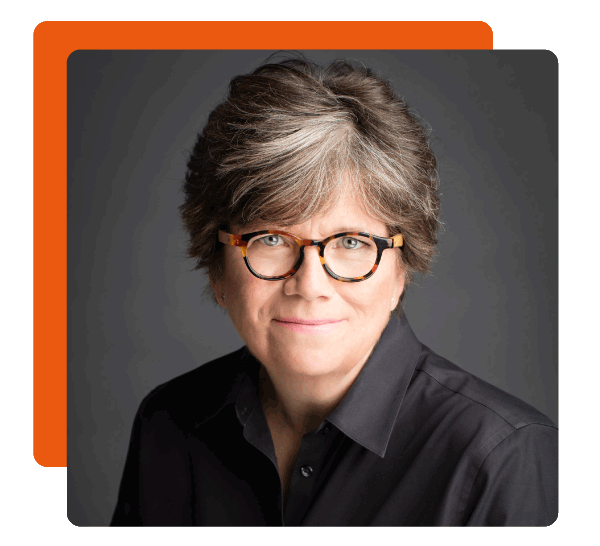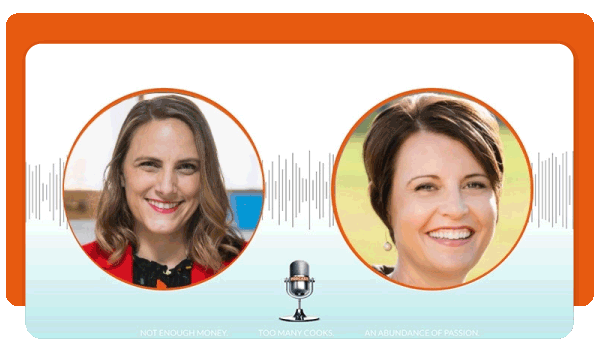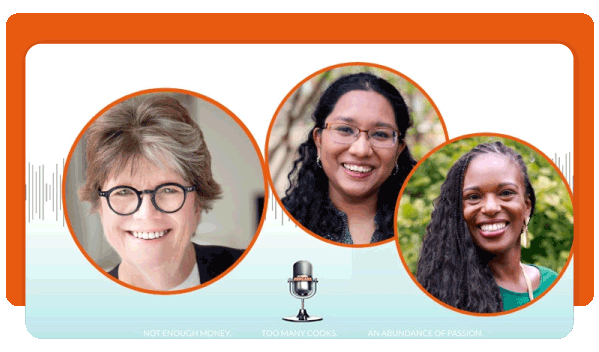Nonprofit Technology & Fundraising Blog
Subscribe to our mailing list

February 4, 2025 | Nonprofit Trends, Planning
As nonprofit leaders and professionals enter 2025, regular analysis and adaptation are more critical than ever. That’s why our partnership with nonprofit leadership expert Joan Garry, founder of the Nonprofit Leadership Lab, comes at a perfect time, as she offers her invaluable advice to help you navigate shifts and fundraise effectively.
“As a trusted advisor to nonprofit leaders, I’m thrilled to partner with DonorPerfect. Their team understands the challenges fundraisers face and their software provides the support nonprofits need to thrive.”
– Joan Garry

Like DonorPerfect, Joan started in 1981. For decades, she has focused on empowering nonprofit superheroes with unwavering support for their day-to-day operations, fundraising campaign strategies, and personal career development. Like Joan, DonorPerfect is not only a nonprofit resource, but also a safety net. Our employee-owned team has experience in professional fundraising roles, allowing us to truly understand today’s nonprofit challenges to support you and your mission every step of the way.
From staying informed to strengthening your leadership, here are 10 actionable strategies inspired by Joan Garry to propel your nonprofit in the year ahead.
Let’s start with a quick and easy one! You can create Google alerts to follow topics related to your mission and work. Some organizations use this tool to track their appearances in the press, but Joan encourages fundraisers to think bigger. For example, you can track policy rulings affecting your mission or its beneficiaries.
Joan recommends setting up an alert for HR 9495—legislation allowing the Secretary of the Treasury to designate 501(c) nonprofits as “terrorist supporting organizations,” at their discretion and without full evidence or reasoning.
On the lighter side, you can set up alerts to inform you of national giving days and identify key opportunities to engage your donors. Your donors trust you as a source of timely information related to your mission, and keeping them in the loop helps you build loyalty. Possibilities range from organizing an event based on a national giving day to scheduling appreciation emails for National Volunteer Week.
Another quick and easy one! To be a well-rounded asset to your nonprofit team, Joan emphasizes the importance of staying connected with the nonprofit sector as a whole, rather than staying inside your mission “bubble.” Subscribing to a nonprofit publication keeps you updated on the latest news and research and helps you fine-tune your fundraising strategy and make more informed decisions.
“Most of your time is spent in the organizational bubble, right? And when you can, you spend time in your sector bubble — you connect with colleagues in your community or in your sector. And ‘when you can’ often means ‘so not often enough.’ As we head into the new unchartered territory and potentially turbulent waters of a new administration in Washington, you as a nonprofit leader will need to spend real time outside your organizational bubble.”
Some of our favorite sources include the Chronicle of Philanthropy, the Association of Fundraising Professionals, and GivingTuesday. We’re also lucky to live in a time with so many fantastic fundraising podcasts. Joan’s is called Nonprofits Are Messy, answering the most pressing questions faced by nonprofit leaders around the world.
A SWOT analysis (Strengths, Weaknesses, Opportunities, and Threats) is a powerful tool for assessing your nonprofit’s current position. You can use this analysis to identify areas for growth, anticipate challenges, and align your fundraising goals with your mission, staff, volunteers, and board members. The best practice is to regularly revisit your SWOT analysis (at least quarterly) to ensure your strategies remain relevant and effective.
Specifically, Joan recommends developing a deep understanding of the key relationship between your board and leadership—the factor that tells you more about the health of your nonprofit than any other. Your SWOT analysis will help you evaluate these internal dynamics and identify areas where alignment or improvement is needed to achieve strategic goals. Pairing this with regular succession planning ensures your organization is equipped with a leadership pipeline to sustain long-term success.
“Do this [SWOT] exercise with a subset of the board and staff in the first quarter in light of what you are learning about possible IRS changes and possible legislative changes, in order to tighten up challenging areas and look at how you can lean into your strengths.”
It’s no secret that great work starts with strong leadership. Even if you’re in an entry-level role at your nonprofit right now, it’s never too early to start prioritizing your personal and professional development. It empowers you to be the best fundraiser you can be.
Tracking your proudest moments—like exceeding donor retention goals or securing a major gift—helps build confidence in your leadership. Plus, personal development doesn’t have to strain your budget. You can explore free resources like webinars, nonprofit leadership guides, and online courses to sharpen your skills and stay ahead of fundraising trends.
Your fundraising platform can play a vital role, too, ensuring that your efforts are supported, streamlined, and celebrated. Look for a system that helps you lead with clarity and confidence, making it easy to track your personal and professional successes across a multitude of campaign types and communication channels.
When you invest in yourself and the right tools, you’re not only improving your performance but also inspiring your team to achieve more. For example, DonorPerfect empowers development professionals with a centralized platform to measure campaign performance and generate automatic reports that demonstrate impact.
A disengaged board can hinder your nonprofit’s progress. Joan suggests aligning your board with your major fundraising goals and equipping them with the information needed to succeed, like regular staff and donor retention updates, specific ways to get involved in projects or events, and scheduled reports. This helps your board understand how their work supports your mission, motivating them with productive conversations about donor trends and campaign outcomes.

Having trouble broaching a difficult topic with your board? Join Nonprofit Leadership Lab CEO, Glennda Testone, and Parisa Parsa as they explore how nonprofit leaders can have productive conversations amidst polarization and division. Parisa shares practical strategies for addressing power dynamics and leading productive conversations across differences.
Listen now: Nonprofits Are Messy – Productive Conversations in Polarizing Conflicts
Joan encourages fundraisers to become comfortable with living in a nonbinary world. One of the most important tools in a fundraiser’s arsenal is the ability to have difficult, meaningful conversations.
A genuine commitment to diversity, equity, and inclusion (DEI)—in your fundraising and your organization—creates better relationships and broadens your impact. If your organization hasn’t incorporated inclusive procedures and protections for everyone, it’s time to implement them.
Your fundraising system must be able to support you in quickly updating name changes, deleting dead names, and noting pronoun preferences. For example, DonorPerfect Online Forms can be customized to include a field asking for donor and volunteer pronouns. You can also create custom data fields within your database to reflect salutation preferences.
Ideally, a Gen X board member should be able to effectively communicate with a Gen Z development assistant without issue. Although it’s not that simple, Joan stresses the importance of building a culturally intelligent and welcoming organizational culture. Meaning, that 2025 will be full of difficult conversations, and communication issues can stand in the way of your organization’s impact.
A great place to start is with transparency and authenticity to build trust. Let your team know that in 2025, you’re hoping to hold conversations that feel productive and comfortable for everyone—maybe you can send out a survey to shed light on their preferences.

Noticing a communication breakdown between staff members? Join Joan Garry, Bianca Anderson, and Lamisa Mustafa in a conversation about shifting the stereotypes and misconceptions about Gen Z. Whether you’re grappling with workforce challenges or striving to lead inclusively, this podcast episode will equip you with insights and tools to turn generational differences into an asset.
Listen now: Nonprofits Are Messy – Why We Must Reframe The Narrative Around Gen Z
“Manage your time, and don’t let it manage you,” Joan pleads. As a staunch advocate of nonprofit superheroes, she offers a self-led, on-demand time management workshop to help fundraisers take control of their schedule before burnout sets in.
Learn to be a manager who delegates, she says, and an employee who collaborates. As an employee, if you have competing tasks piling up, speak openly to your supervisor and ask which ones take priority. As a supervisor, instead of asking for the status of a project, ask what you can do to remove obstacles and help the project along.
It’s equally important to invest in a fundraising system that allows you to forgo repetitive tasks that don’t add value to your day. Automating things like gift receipts and follow-up reminders allows you to focus on high-value, high-impact activities.
For example, nonprofits that use DonorPerfect average a 25% increase in funding in their first year, partly because of the trickle-down effect of time savings—they’re able to automate their communication tasks without compromising their personalization techniques.
“Say ‘no’ or ‘not yet’ more often and get home in time for dinner.”
As our world continues to rapidly evolve, the desire for connection and community will only grow. Joan emphasizes the importance of fostering meaningful relationships with donors, volunteers, and staff in 2025.
This starts with creating opportunities for engagement that reinforce your shared mission. Involving your network in collaborative initiatives, such as volunteer projects or peer-to-peer fundraising campaigns, makes them feel like an integral part of your work. To accomplish this, seek fundraising tools that allow you to craft personalized thank-yous, organize impactful events, and share compelling stories about your cause.
For example, a fundraising system like DonorPerfect allows you to automate donor communications and track interactions, so you can focus on building relationships instead of juggling administrative tasks. By leaning into your passion and encouraging a supportive, connected community, you’ll inspire others to stay engaged and committed to your cause.
Bring your team together and brainstorm ways to keep your network close, comfortable, and connected. Try attending a training class or expert webinar as a group and compare your takeaways.
P.S. The theme of our 2025 DonorPerfect Community Conference is CONNECTION, where nonprofit industry experts will share fundraising strategy inspiration and advice. Join us on June 3rd and 4th—registration is free, and sessions are virtual!

Joan points out that the average tenure of a nonprofit executive director is five years. Whether you’re hoping to step in or out of this role, it’s important to plan ahead. She suggests focusing on organizational health and developing leadership pipelines. Doing so makes your nonprofit attractive to top candidates and prepares emerging leaders within your team to take on greater responsibilities.
Regular check-ins with key staff and board members help you identify potential leaders and provide them with growth opportunities to step into larger roles. Be prepared to have frequent one-on-ones and allow time for personal development activities like reading, journaling, attending webinars or classes, and getting certifications.
By creating a culture of leadership preparedness and leveraging reliable reporting tools, you can ensure your organization remains mission-focused and well-positioned to thrive, even as roles and responsibilities evolve.
Fundraising in 2025 presents challenges, but it also presents opportunities to lead your nonprofit with confidence and purpose. From strengthening your leadership to embracing DEI and generational shifts, these strategies will help empower you to build stronger relationships, achieve your goals, and make a lasting impact.
See how you can make Joan Garry’s suggestions come to life!
Notifications
Follow us on social!